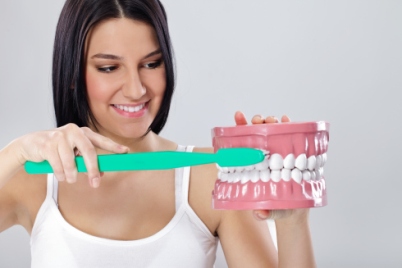If your dentist has told you that you have periodontal disorder, you are not the only one, as many folks tend to suffer from this condition. Many adults in the U.S. have been currently reported to have some form of gum disease. Periodontitis is a gum infection and inflammation that results in major damage of bones and ligaments that support the teeth.
Periodontitis is an oral condition that occurs when gingivitis (the infection or inflammation of gum) is left untreated or when the treatment is delayed. This inflammation and infection in the gum spreads from the gingiva i.e. gums to the bones and ligaments that support the teeth. Eventually the teeth tend to become loose and fall out.
Periodontitis is the actual reason behind the tooth loss in adults. However, this problem is uncommon in the childhood but the risk upturns during adolescence.
What Are The Signs Of Periodontal Disease?
Symptoms of Periodontitis include red and inflamed gums, loose teeth, receding gums, and persistent bad breath. Old age, certain illness like diabetes, smoking, and other aspects increase the risk of periodontal disorder. If you are suffering from this condition, your dentist may refer you to a periodontics, a specialized doctor for treating Periodontitis. If proper treatment is not taken, periodontal disorder can lead to teeth loss.
Practicing A Good Dental Hygiene Can Help In Preventing Periodontitis:-
Practicing a good oral hygiene consistently can help averting gingivitis and periodontitis. This includes the following…
- Use fluoride toothpaste for brushing your teeth. Make a habit to brush twice daily.
- Make sure to replace your toothbrush every one or two months.
- Use an interdental cleaner or floss to clean between the teeth.
- Have a well- balanced diet and limit the intake of between meal snacks.
- Smoking is considered as the major risk factor for Periodontitis and other gum disease. So, if you have the habit of smoking, you should quit.
- Visit a dentist regularly for oral examination and teeth cleaning.
Treatment For Curing Periodontitis
The actual aim of treatment is control the infection. The form of treatments will differ, depending on the severity of the gum disease. Daily care and maintain good hygiene is of utmost important. The dentistmay also advise altering some behaviors, such as quitting smoking, as a way to increase treatment outcome.
Deep Cleaning
The dental hygienist or periodontics uses a deep cleaning method i.e. scaling and root planing. Deep cleaning procedure removes the plague calculus (tartar) that causes periodontics, while, the scaling scrapes out the tartar from the above and below gum line. Root planing smoothens the root surfaces and gums. The dentist may ask for follow-up visits to reevaluate the problem completely. In case of deep infection and periodontal pockets, periodontal surgery may be suggested.
Surgeries
If maintaining a good oral hygiene and non-surgical cures are not enough, dentists may recommend for following surgeries.
Flap Surgery – A flap surgery is performed to remove the calculus in deep pockets or to lessen the pocket for easy cleaning. The gums are then lifted back for removing tarter. After the removal of tartar, the gums are sutured back to its original place so that they fit closely to the tooth. Eventually, the gums will heal and stick tightly to around the tooth. In few cases, there are chances of teeth appearing longer then they looked before.
Bone And Tissue Grafting – This is a process where the affected bone and gum tissue is regenerated. With bone grafting or implanting, a new bone natural or synthetic bone is fixed in the place where bone was lost, promoting bone growth.
Guided Tissue Regeneration- In this procedure, a small piece of mesh-like material is inserted between the bone and gum tissue. This restricts the gum from growing into the bone space thereby giving the bone and its connective tissue a chance to grow again. The periodontics may also use special proteins for the natural regrowth of bone.
Soft Tissue Graft– The over-exposed tooth roots is covered by using soft tissue graft technique. Here, the dental professional takes tissues from another part of the mouth or uses synthetic stuffs to cover the roots of exposed tooth.
Experts say that is not possible to foretell how successful these treatments are, as each case is different. The results of these treatments also depend on how advance the Periodontitis is, how well the patient follows the good oral hygiene program, as well as other aspects, like cigarette smoking.


 Cart : 0 items - $0.00
Cart : 0 items - $0.00











